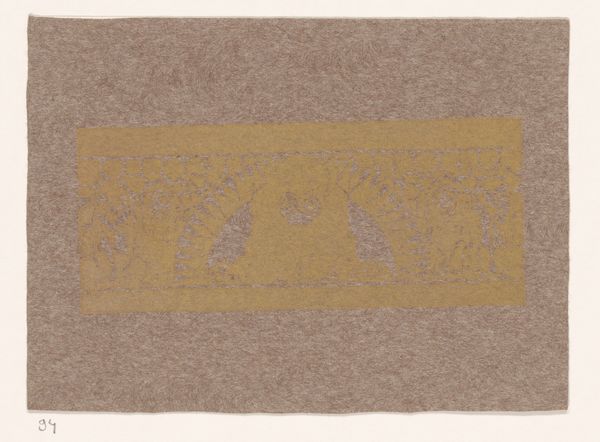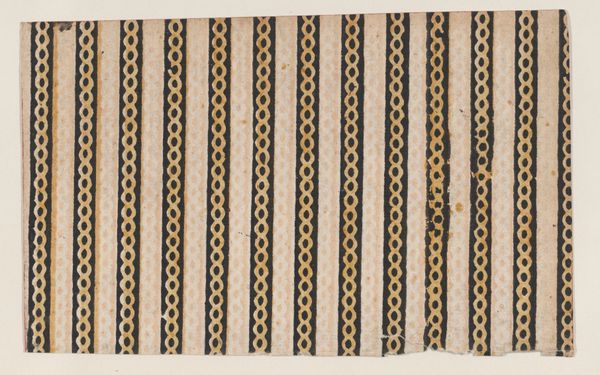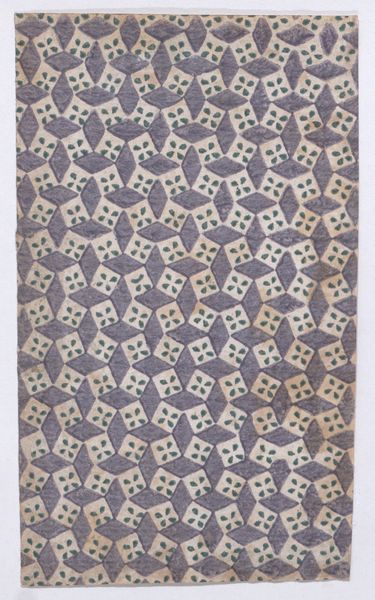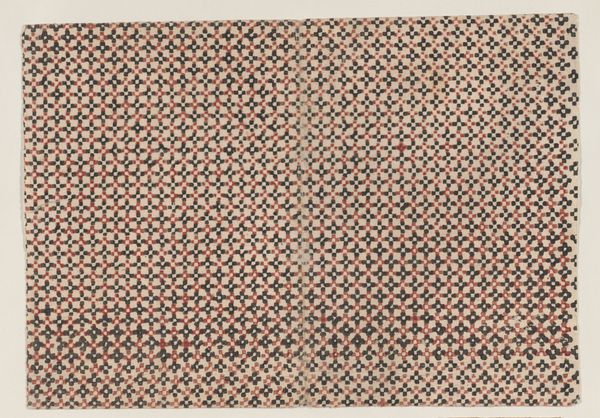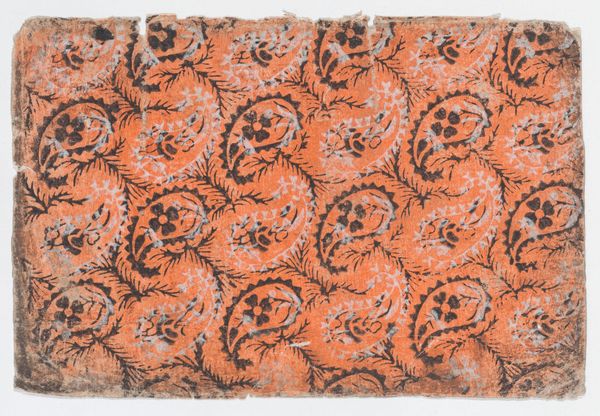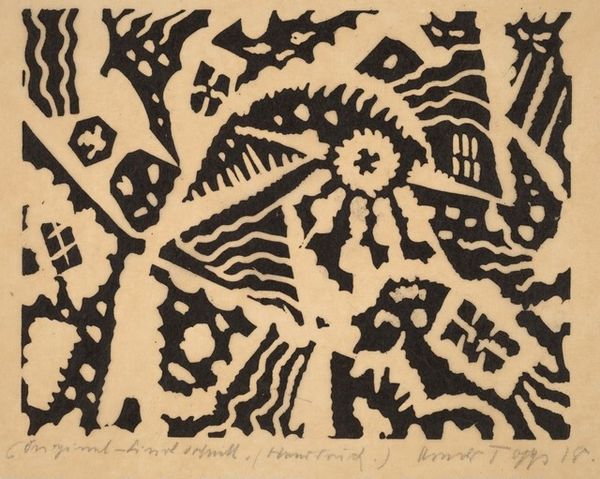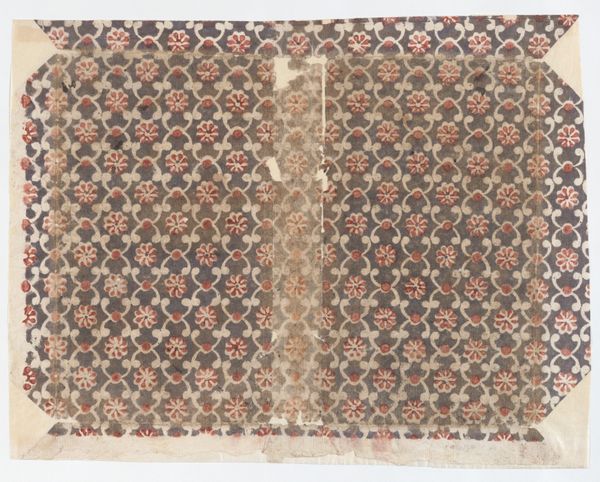
weaving, textile
#
natural stone pattern
#
pattern
#
weaving
#
textile
#
ancient-egyptian-art
#
pattern making
#
fashion and textile design
#
figuration
#
text
#
hand-embroidered
#
embroidery
#
egypt
#
organic pattern
#
ancient-mediterranean
#
watercolour bleed
#
textile design
#
imprinted textile
#
layered pattern
Dimensions: 58 × 18 1/2 cm (23 1/2 × 6 3/4 in.)
Copyright: Public Domain
Curator: This remarkable textile fragment, known simply as “Panel,” dates from the Roman period in Egypt, specifically the 3rd to 6th century AD. It's held here at the Art Institute of Chicago, offering a glimpse into Coptic textile traditions. Editor: It has such an earthy, worn quality. The dark patterns against that faded ground really give a sense of age. It’s beautiful, in a subtle, understated way. Curator: Indeed. The appeal extends beyond its age. This panel, like many Coptic textiles, provides valuable insights into the socio-religious context of Roman Egypt. These textiles were often found in tombs, suggesting their use in funerary rituals or as garments for the deceased. The motifs present are equally revealing. Editor: Formally, the frieze-like arrangement of figures, enclosed within those distinct borders, presents an interesting visual rhythm. Notice the repeating motifs and how they're stylistically rendered with simple, almost iconic shapes. It's not about naturalistic representation but more about symbolic communication through repeated elements. Curator: Exactly! The prevalence of certain motifs - animals, human figures, crosses - speaks to the syncretic nature of Coptic culture, blending Egyptian, Roman, and Christian influences. The arrangement you noted is quite interesting when we examine these pieces in place; were they used as decorative elements of clothing? Curtains? What role does that location, as selected by the patrons or weavers, communicate about values of status and social structure? Editor: Also note the contrast between the densely packed central band and the simpler border designs. It creates a visual hierarchy, drawing your eye towards that main field of activity where these various symbols interact. The restricted color palette as well supports the reading. Curator: Considering these textiles are also discovered in non-funerary settings, we must consider the role these textiles played within the everyday sphere. These complex iconographies that fuse symbols and aesthetic values showcase these artisans who occupied fluid religious, ethnic and cultural communities. What sort of value, religious or secular, was added when consumers came into contact with such imagery on a daily basis? Editor: Looking at its woven structure and overall organization gives this 'Panel' visual presence which extends beyond mere decoration, right? This artifact reflects the creative values of an interconnected world with trade networks spanning all across Africa and Eurasia! Curator: You're right, this “Panel” gives testament to a cross-cultural context where material culture offers us crucial glimpses into communities throughout history! Editor: Yes, its understated and earthy materiality communicates aesthetic simplicity while providing insights through symbolic communication, no?
Comments
No comments
Be the first to comment and join the conversation on the ultimate creative platform.



